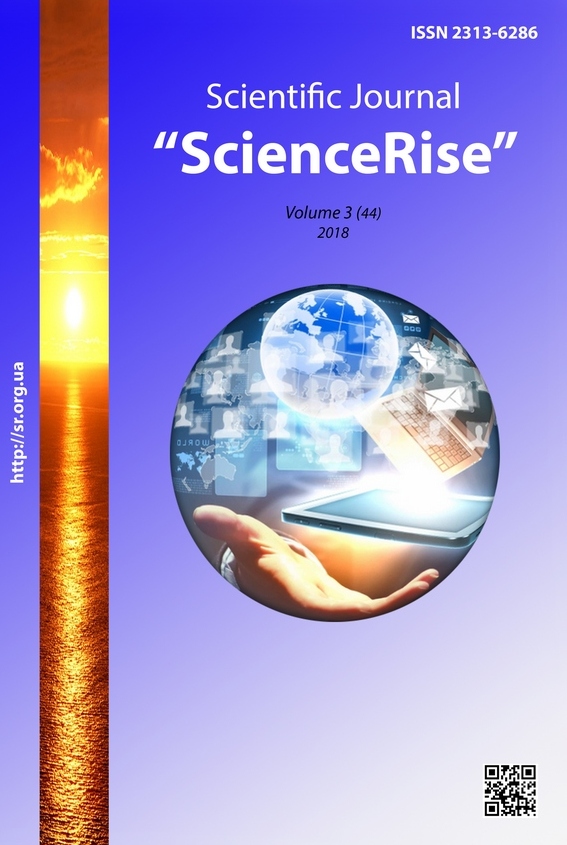Clinical blood analysis of the great tit Parus major
DOI:
https://doi.org/10.15587/2313-8416.2018.127387Keywords:
Parus major, leukocytes, erythrocytes, micronuclei, parasitic infections, venous bloodAbstract
The blood analysis of the great tit in a protected area of National Nature Park “Homilshanski Forests” (Kharkiv Region, Ukraine) was performed in the age-related dynamics of its postembryogenesis. Using our own method, developed for collecting venous blood from the eye sinus, the identity of leukogram percentages between the literary data and our obtained results was established thereby providing evidence in favour of the application of our development. Erythrocytes were studied with the help of the micronucleus test, which results reliably testify that the studied birds were not exposed to any chemical or physical contamination. No parasitic infections were found in blood smears. Further improvement of the blood taking method is planned in order to collect samples for biochemical and genetic analyses
References
Cea, G. F. A., Etcheberry, K. F. C., Dulout, F. N. (1983). Induction of micronuclei in mouse bone-marrow cells by the flavonoid 5,3′, 4′-trihydroxy-3,6,7,8-tetramethoxy-flavone (THTMF). Mutation Research Letters, 119 (3-4), 339–342. doi: 10.1016/0165-7992(83)90182-3
Gashkov, S. I. (2007). Biology of the great tit (Parus major L.) in the southern taiga of Western Siberia. Tomsk, 24.
Grishchenko, V. N. (1995). Seasonal dynamics of the sex-age structure of the great tit population in Kaniv Reserve. Zapovidna Sprava v Ukraini, 1, 48–51. Available at: http://aetos.kiev.ua/selectrus/parus.htm Last accessed: 12.01.2015
Baryshnikov, P. I., Bondarev, A. Yu., Novikov, N. A. (2010). Characteristics of microorganisms of wild birds of the forest-steppe zone of Altai Territory. Bulletin of Altai State Agrarian University, 11 (73), 56–58.
Bityukov, I. P. (1979). Changes in the number of erythrocytes and hemoglobin in different periods of the reproductive function of cows. Voronezh, 105, 162.
Irisova, O. A., Irisov, E. (1982). Features of the hematological indicators in the typically high-altitude birds of Asia: adaptation at different levels of biological integration. Tomsk, 197.
Almazov, V. A., Ryabov, S. I. (1963). Methods of functional blood analysis. Leningrad, 132.
Kal-Kalif, Ya. Ya. (1941). On the leukocyte index of intoxication and its practical significance. Medical practice, 1, 31–33.
Irisov, E. A., Kamaeva, S. I., Andryushtna, O. A. et. al. (1980). Morphological and biochemical parameters of blood of birds of Putorana Plateau. Tomsk, 143.
Imangulov, Sh. A., Egorov, I. A., Okolelova, T. M. et. al. (2004). A technique to carry out scientific and production studies on poultry feeding: recommendations. Sergiev Posad: VNITIP, 43.
Green, N., Stout, U., Taylor, D. (1990). Biology. Vol. 3, No. 2. Moscow: World, 193.
Donnik, I., Derkho, M., Kharlap, S. (2015). Blood cells as an indicator of activity of stress responses in the organisms of chicks. Agrarnyi Vestnik Urala. Ptitsevodstvo, 5 (135), 68–71.
Visser, M. E., Lessells, C. M. (2001). The costs of egg production and incubation in great tits (Parus major). Proceedings of the Royal Society B: Biological Sciences, 268 (1473), 1271–1277. doi: 10.1098/rspb.2001.1661
Valkyunas, G., Yezhova, T., Mironov, S. (2001). High infection extensity and variety of blood parasites in passerine birds in South Turkmenistan. Parazitologiya, 35 (2), 135–142.
Paulke, E., Haase, E. (1978). A comparison of seasonal changes in the concentrations of androgens in the peripheral blood of wild and domestic ducks. General and Comparative Endocrinology, 34 (4), 381–390. doi: 10.1016/0016-6480(78)90278-2
Vartanyan, V. L., Karapetyan, S. K. (1959). Method of calculating blood cells of birds, amphibians and reptiles. DAN the Armenian SSR, 29 (2), 131–133.
Bessarabov, B., Kletikova, L., Kopot, O., Alekseeva, S. (2009). Protective mechanisms of birds in the postembryonic development. Ptitsevodstvo, 10, 46–47.
Miklyaeva, M., Okolnicheva, A., Popenko, N., Miklyaeva, Yu., Antipova, M.; Vostretsov, A. I. (Ed.) (2017). Studying the influence of organophosphorus pesticides on the great tit chicks inhabiting industrial gardens. Neftekamsk, 34–39. Available at: http://science-peace.ru/files/IPvSN_2017.pdf
Ponomarev, V. A., Pronin, V. V., Kletikova, L. V., Malovichko, L. V., Yakimenko, N. N. (2014). Clinical and biochemical parameters of blood of birds. Ivanovo: PresSto, 288.
Kilgas, P. (2007). Blood parameters as indicators of physiological condition and skeletal development in great tits (parus major): natural variation and application in the reproductive ecology of birds. Tartu, 43. Available at: http://dspace.ut.ee/bitstream/handle/10062/4842/kilgas_priit.pdf
Khozina, V. M., Yakimenko, N. N., Ponomarev, V. A., Kletikova, L. V. (2015). Haemato-biochemical profile of a model bird species by the example of the great tit (Parus major L.), inhabiting urbanized environment. Modern problems of science and education, 3. Available at: http://www.science-education.ru/pdf/2015/3/104.pdf
Derkho, M., Zubkova, M. (2016). The importance of haematomorphological indices in assessing bird conservation. Evolution of modern science. Kirov, 40–42.
Buslovskaya, L. K., Kovtunenko, A. Yu. (2009). Characteristics of adaptive responses in chickens exposed to vibration of different frequency and transportation. Selskokhozyastvennaya Biologiya, 6, 80–84.
Stimmer, K., Pietering, H., Murty, L., Clauder, K., Finnel, V. (1980). Toxic effects of cadmium and lead on the heart. Environmental hygiene. Moscow, 28–32.
Downloads
Published
Issue
Section
License
Copyright (c) 2018 Maria Drahulian, Angela Chaplygina, Nadiia Savynska, Svitlana Kostenko, Polina Buchek

This work is licensed under a Creative Commons Attribution 4.0 International License.
Our journal abides by the Creative Commons CC BY copyright rights and permissions for open access journals.
Authors, who are published in this journal, agree to the following conditions:
1. The authors reserve the right to authorship of the work and pass the first publication right of this work to the journal under the terms of a Creative Commons CC BY, which allows others to freely distribute the published research with the obligatory reference to the authors of the original work and the first publication of the work in this journal.
2. The authors have the right to conclude separate supplement agreements that relate to non-exclusive work distribution in the form in which it has been published by the journal (for example, to upload the work to the online storage of the journal or publish it as part of a monograph), provided that the reference to the first publication of the work in this journal is included.

